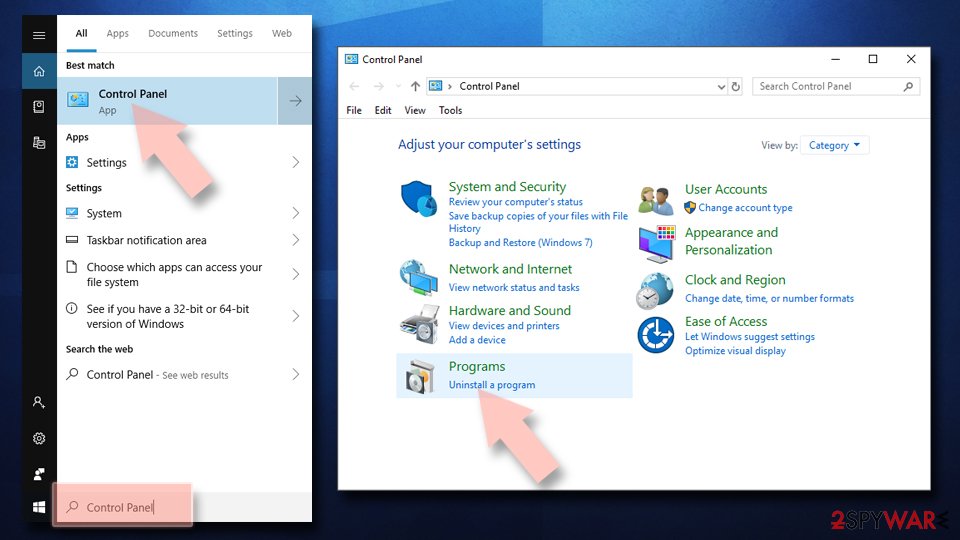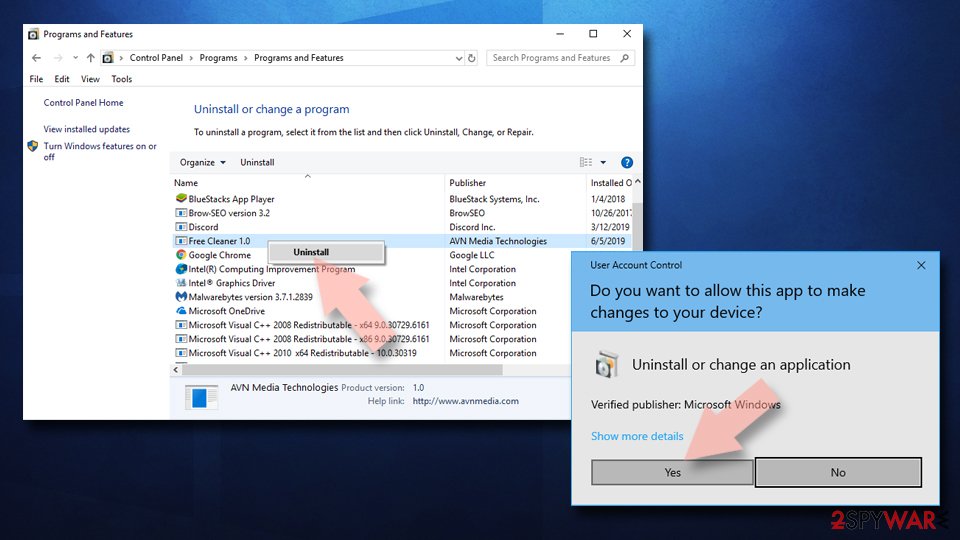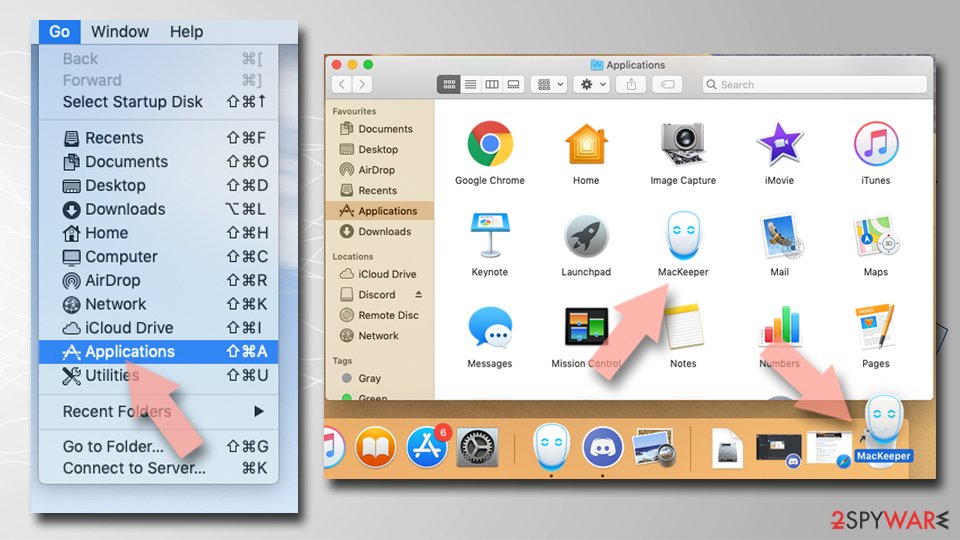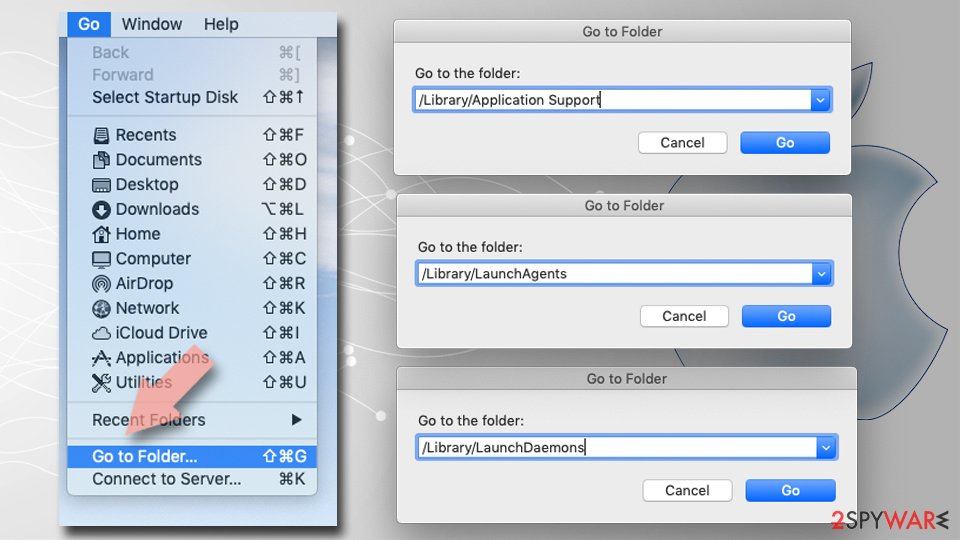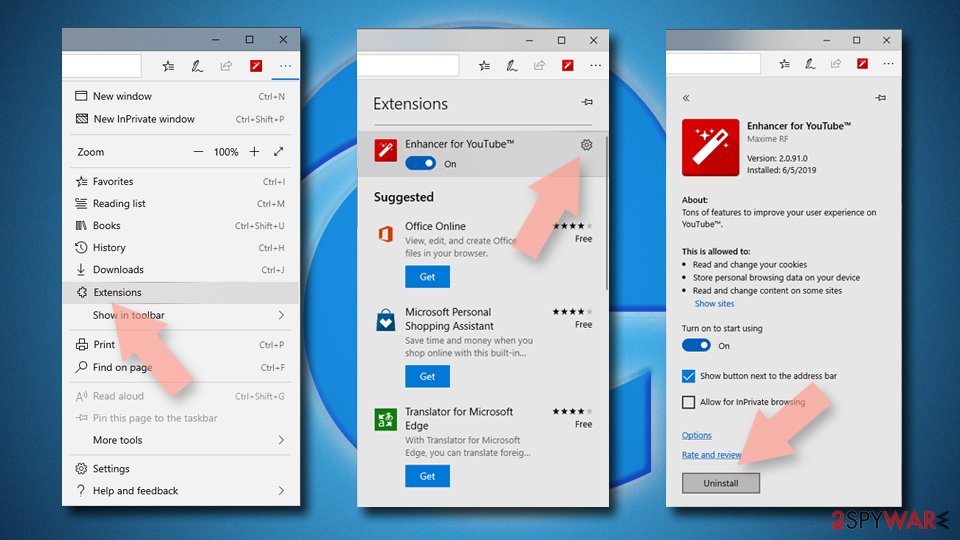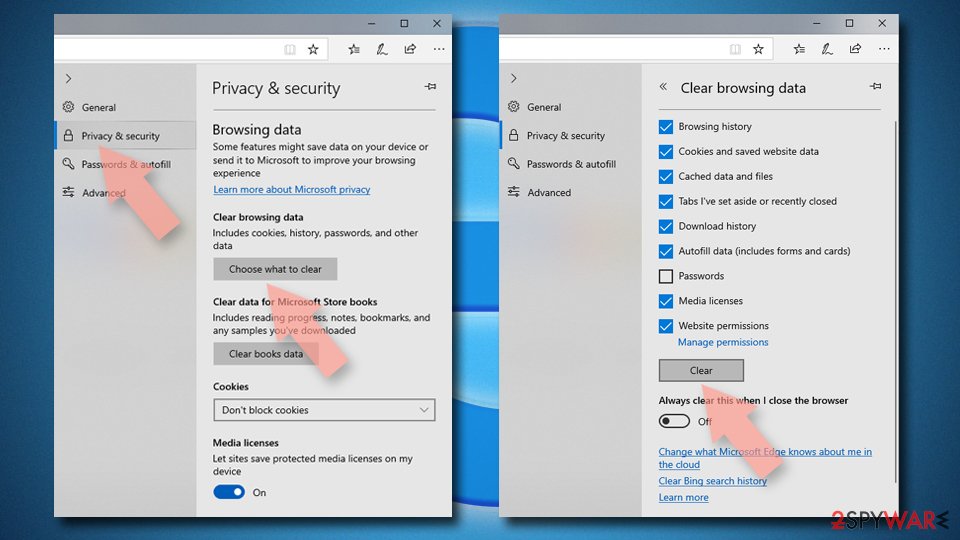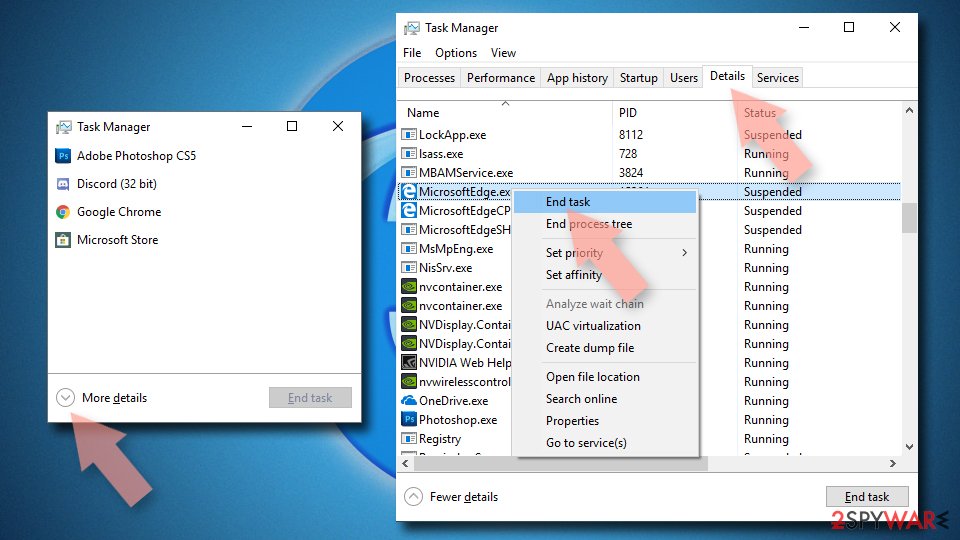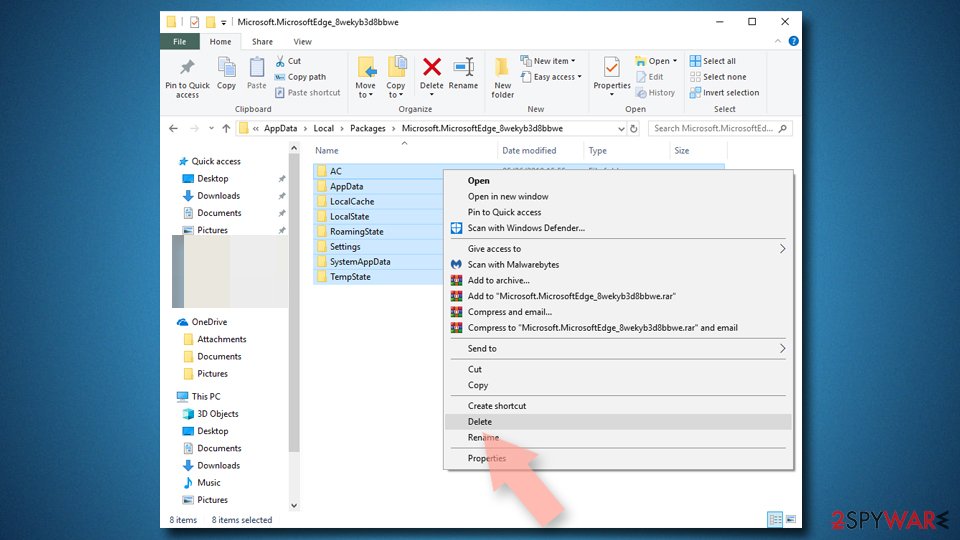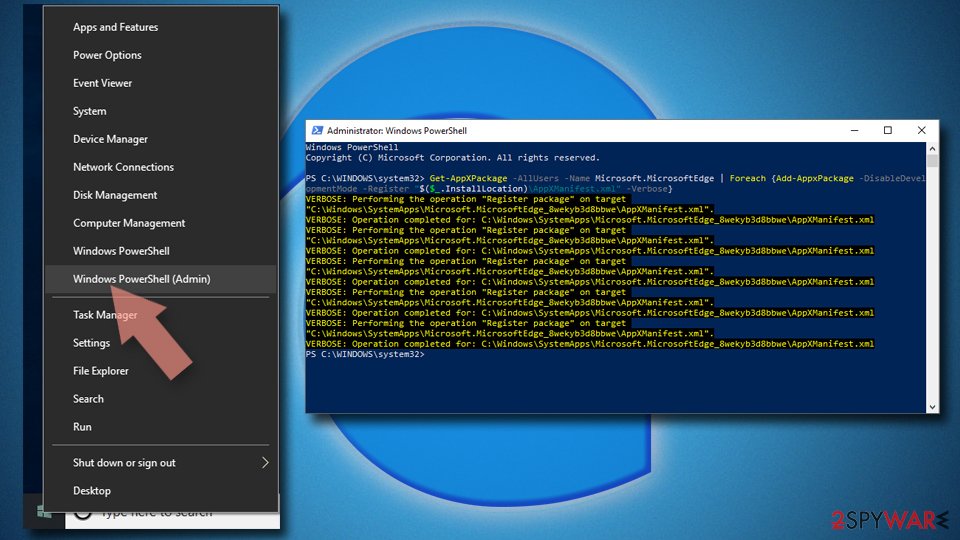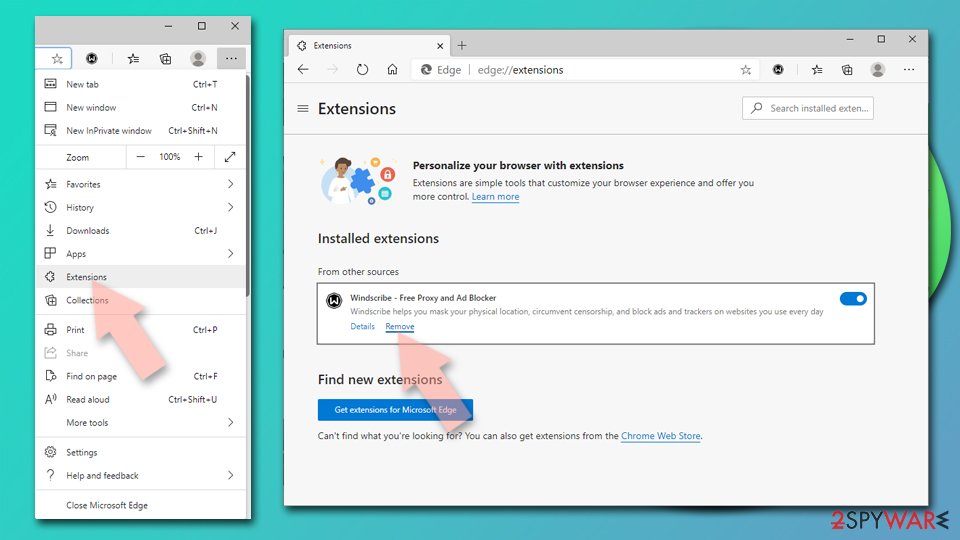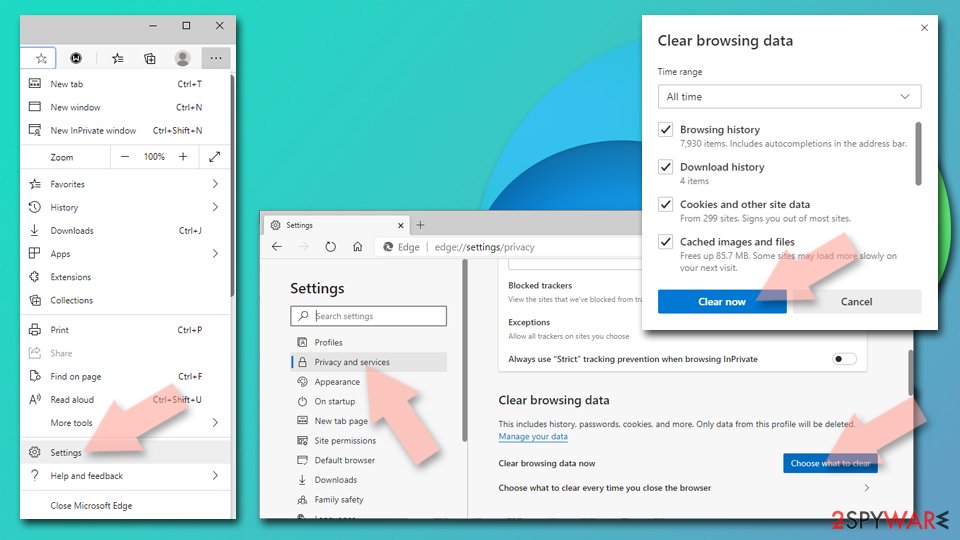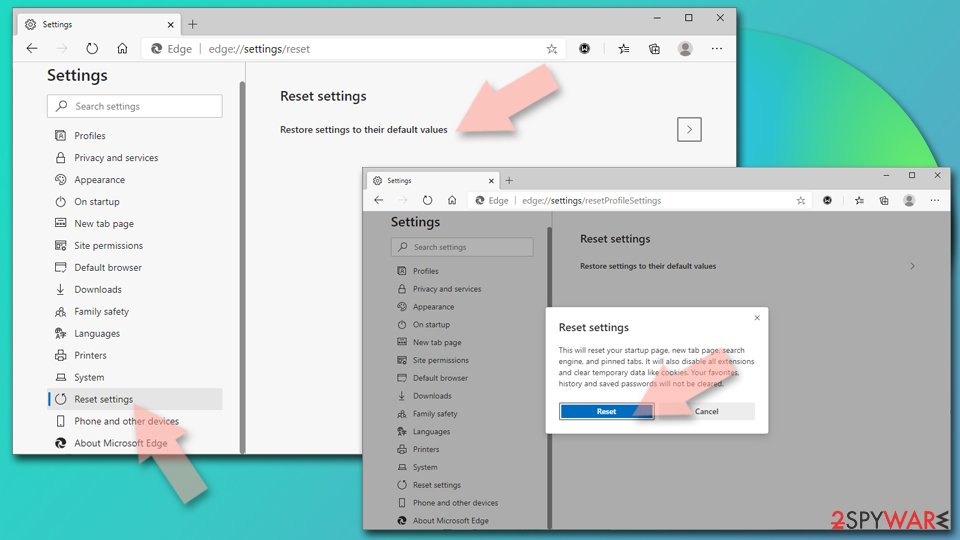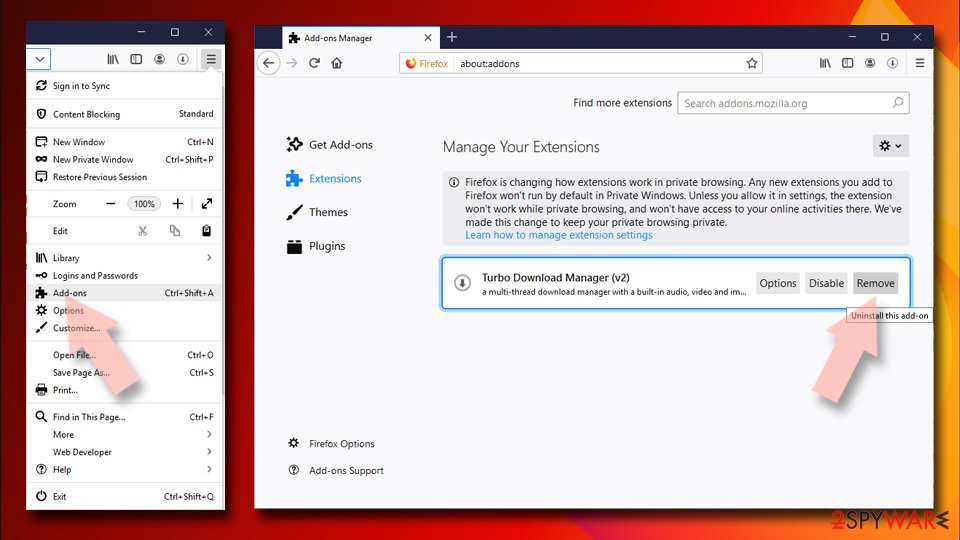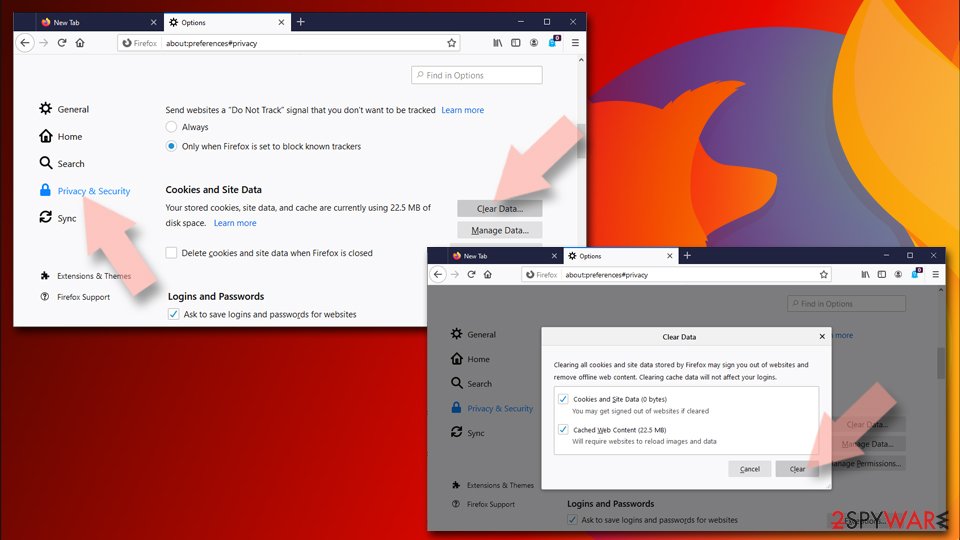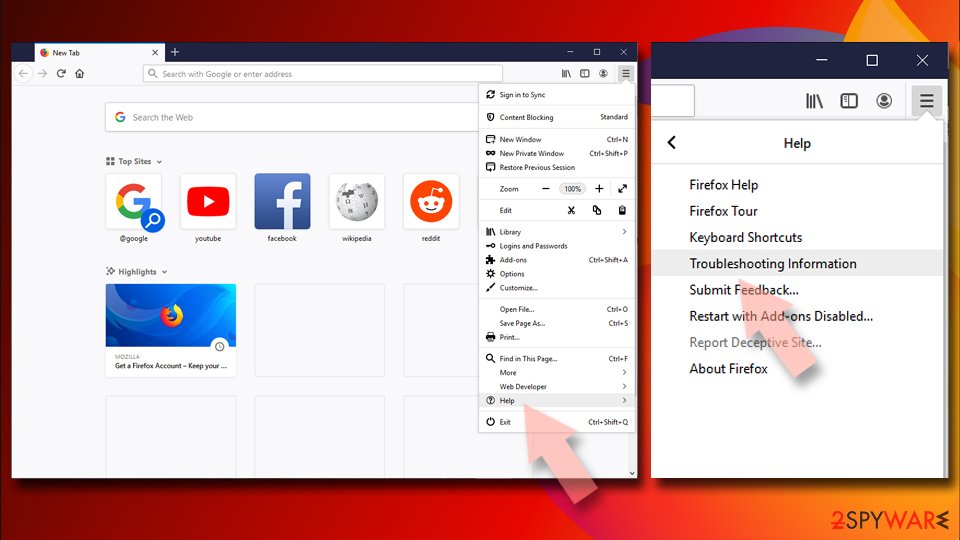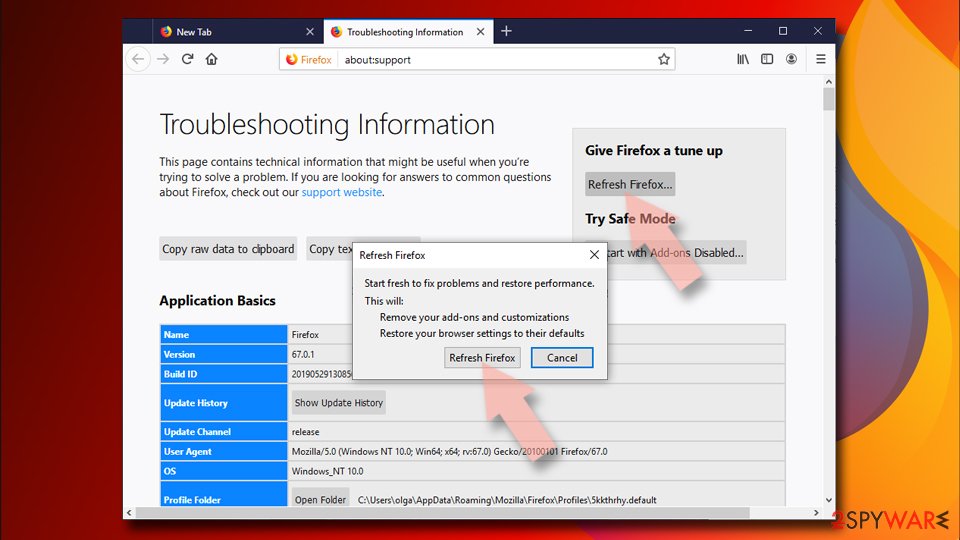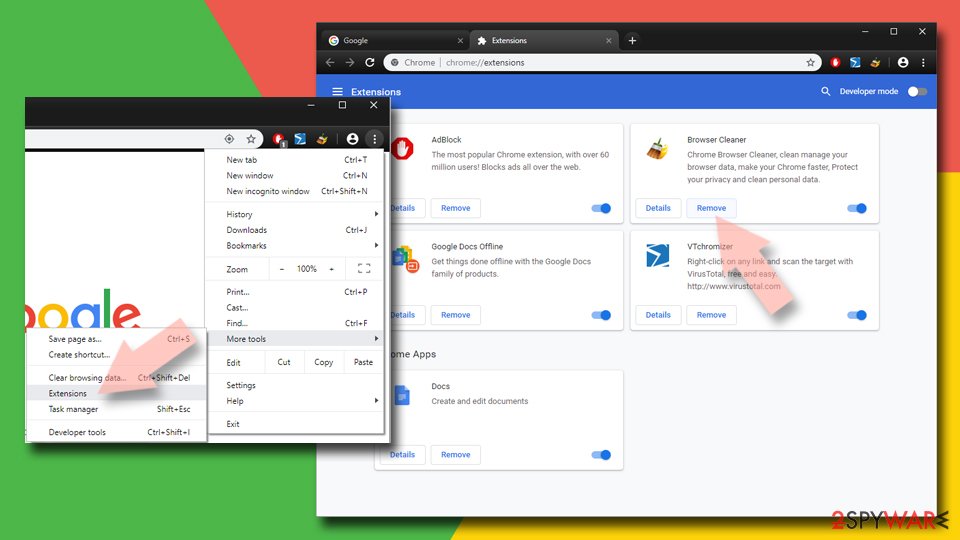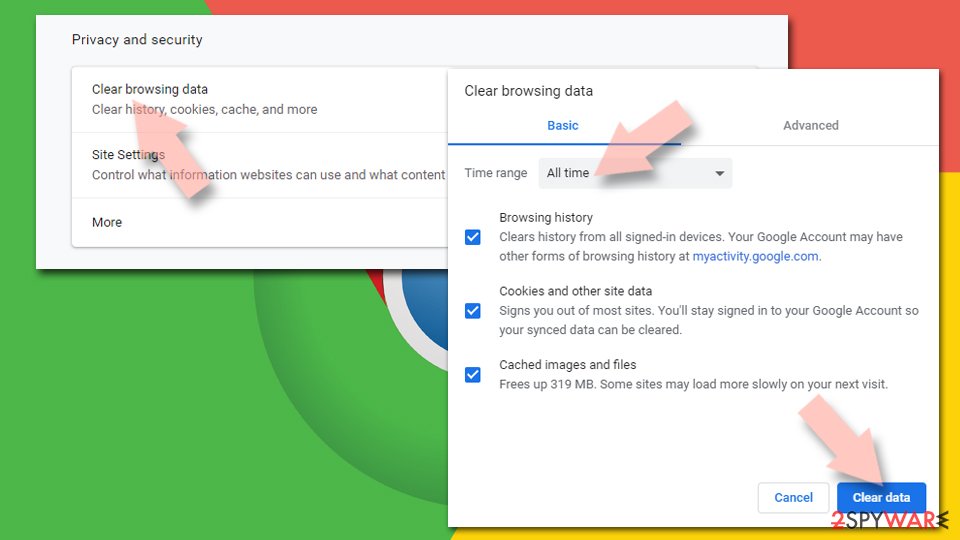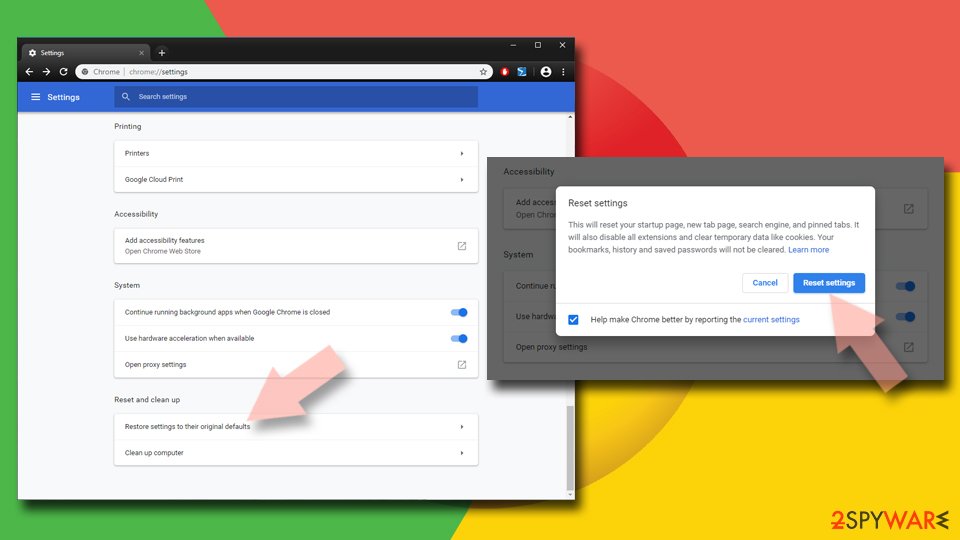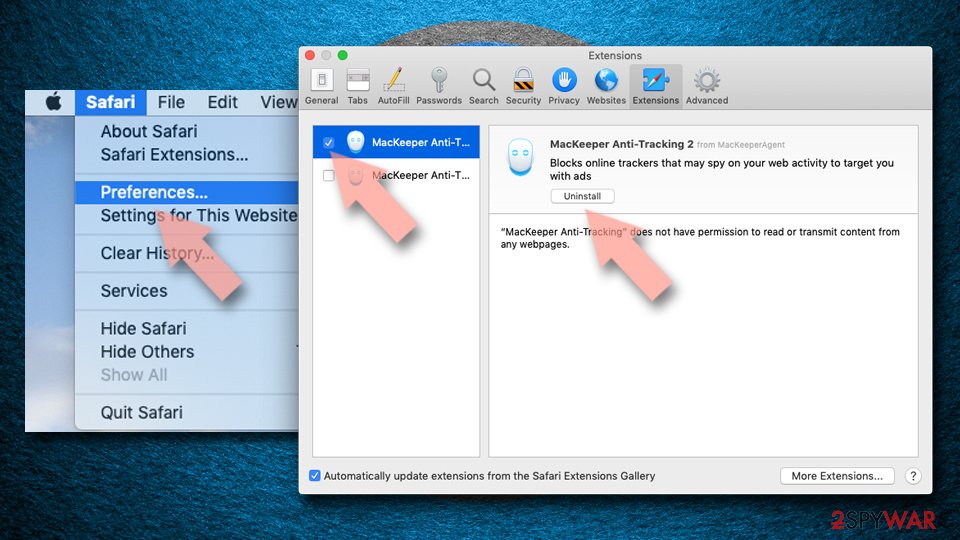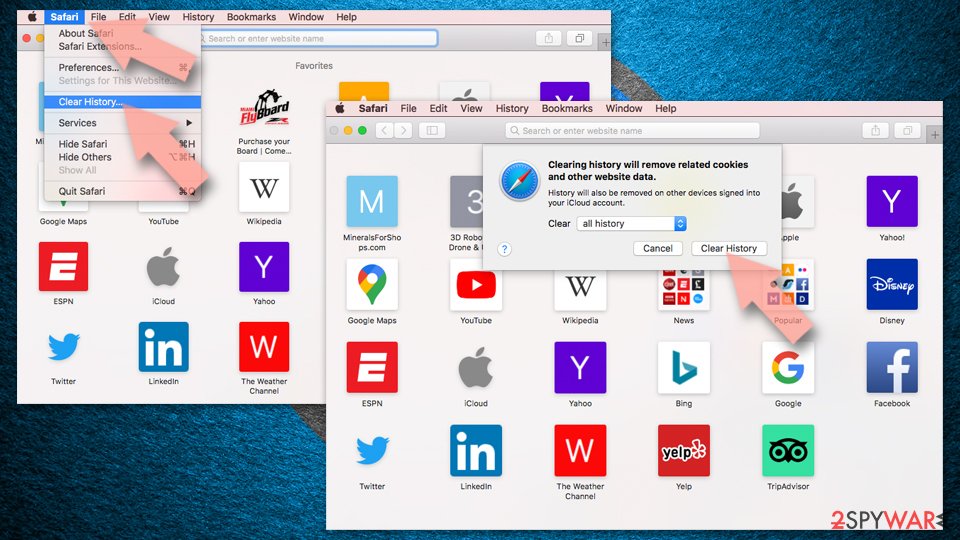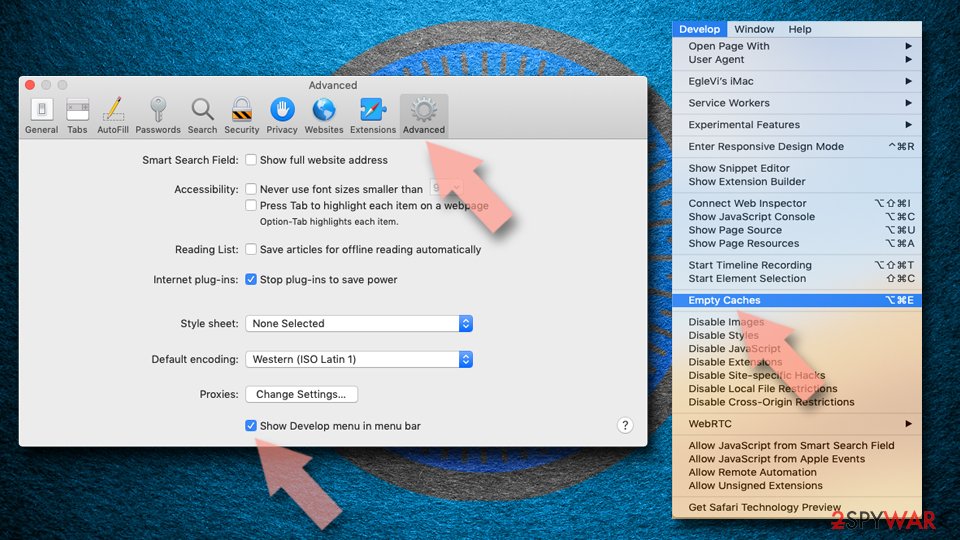Omnibox.bar (Free Guide) - Removal Instructions
Omnibox.bar Removal Guide
What is Omnibox.bar?
Omnibox.bar is the product from Innova Media that operates by affecting your in-browser searches with commercial content
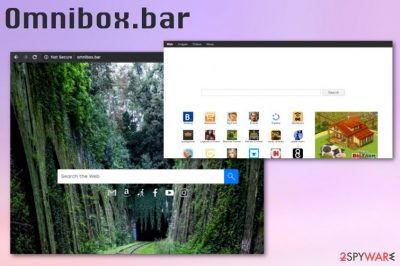
Any search engine and toolbar, adware program or hijacker like Omnibox.bar virus can access information about your online preferences and collect that information for advertising purposes. Later on, this collected and tracked data gets used by third-party companies that sponsor the distribution of the hijacker and get their own revenue from all views and page visits.
| Name | Omnibox.bar |
|---|---|
| Type | Browser hijacker |
| Category | Potentially unwanted programs |
| Developer | Innova Media |
| Distribution | Freeware installations |
| Elimination | Use anti-malware tool and remove Omnibox.bar. We can recommend FortectIntego |
| Main danger | Collects information related to your online browsing preferences and can share this data with third-party companies |
Omnibox.bar is the hijacking software that can show promotional content and push various tools, applications that cause even more problems to your machine. However, those pop-ups and redirects with such content appear directly on your screen while other processes run in the background of your machine.
This Omnibox.bar can run on your computer and then start to cause adware-type symptoms on the infected system. There is not much difference between this cyber threat and any other browser hijacker, or general PUP. Those symptoms include:
- commercial content not originating from the website;
- banners, pop-ups filling the screen with ads;
- searching results injected with hyperlinks, in-text ads, banners;
- changed settings of the default search engine, homepage, new tab;
- installed extensions, toolbars, plug-ins.
These are the main features from which you can identify the PUP infection. Once you notice any of them, perform Omnibox.bar removal and make sure to clean the machine as soon as possible. Unfortunately, when you give more time for the intruder, the more changes can be done.
Elimination process may get even more difficult when all the browser preferences get altered, startup programs and task schedules set to launch Omnibox.bar on the computer at specific times. Rely on FortectIntego and remove virus damage during a system scan, as many experts[1] recommend.

Omnibox.bar is related to various third-party advertisers, and although the ad-tracking issue is not properly disclosed in the Privacy Policy, that collected data can be shared with them:
We will use your information for the following purposes: Operating the Service ‐ We use your information to the extent necessary to operate your service, and ensure compatibility with your device. Reporting ‐ We use your information to generate reports and analytics. Internal operations ‐ We use your information to support our internal operations ‐ including security, and internal debugging. Fraud detection and prevention ‐ We use your information to detect and prevent fraud. Updates ‐ We use your information in order to provide you with updates in connection with the Service. Advertising ‐ We use your information in order to show you ads and offers.
These claims from Omnibox.bar developers may seem harmless, but take everything into consideration and don't fall for these scammers since they can use deceptive techniques to gain your trust. Everything is more simple – data about your goes to advertisers, and they can create commercial content more geared towards your preferences. This way, you are more convinced to click on the pop-up ad or visit the page. Monetization is very important for these sponsors because views and visits can gain profit easily.[2]
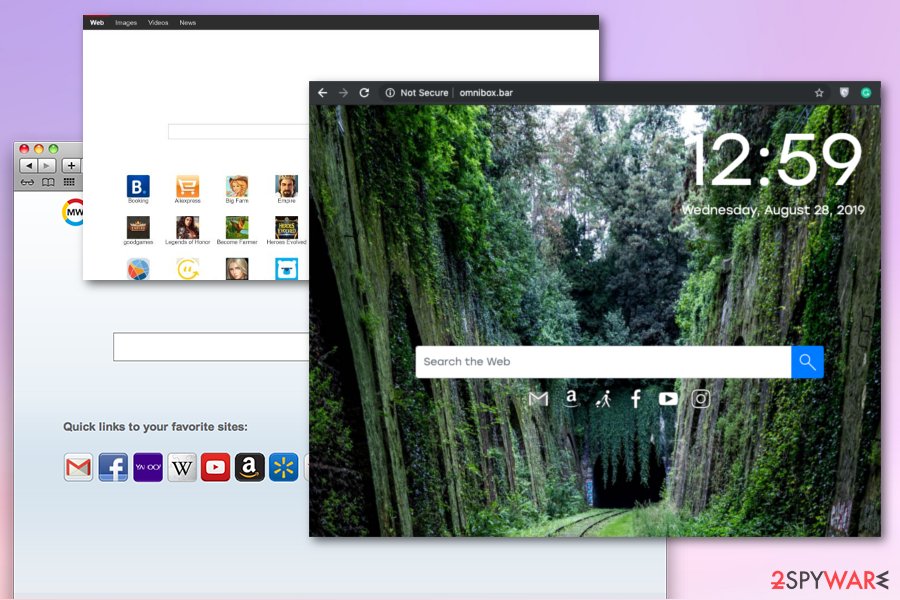
Infections come to your browser from shady freeware installation setups
In most cases, when people encounter such infections like PUPs, they cannot determine what triggered the infiltration because main techniques used by the developers include deceptive websites, promotional content, and installation of similar software.
This is a common method borrowed from marketing because software bundling is used in such instances.[3] However, users can avoid these infections during the freeware installation processes. It is not that difficult, but nowadays, people are more eager to save time and choosing recommended or quick options every step of the way.
Unfortunately, default installation options allow all the pre-packed programs on the system, and you cannot see the list of things you don't want to get. Going for Advanced or Custom options is the key because this way, you see the full list and can de-select suspicious additions.
Omnibox.bar termination involves manually resetting browsers and scanning the machine
If you want to remove Omnibox.bar with all the associated files and programs fully, you need a full system scan that can indicate all the issues with your machine and show dangerous files and programs that cause all the problems with your device. This can be achieved with anti-malware tools and system optimization programs.
Omnibox.bar removal is not that difficult as it may seem, but the process requires paying closer attention to details and system scan results especially. When the anti-malware program checks the machine for potential issues or cyber threats, it indicates various programs and allows the user to delete them all.
Although Omnibox.bar virus may affect more parts of the system than the browser, results also include registry entries and other files that when removed, may cause additional problems. Make sure to check the places of those files before manually deleting them. Once all the PUPs get indicated, you can clean the system and terminate the shady online searching service.
You may remove virus damage with a help of FortectIntego. SpyHunter 5Combo Cleaner and Malwarebytes are recommended to detect potentially unwanted programs and viruses with all their files and registry entries that are related to them.
Getting rid of Omnibox.bar. Follow these steps
Uninstall from Windows
Eliminate Omnibox.bar from the machine and clean the system fully
Instructions for Windows 10/8 machines:
- Enter Control Panel into Windows search box and hit Enter or click on the search result.
- Under Programs, select Uninstall a program.

- From the list, find the entry of the suspicious program.
- Right-click on the application and select Uninstall.
- If User Account Control shows up, click Yes.
- Wait till uninstallation process is complete and click OK.

If you are Windows 7/XP user, proceed with the following instructions:
- Click on Windows Start > Control Panel located on the right pane (if you are Windows XP user, click on Add/Remove Programs).
- In Control Panel, select Programs > Uninstall a program.

- Pick the unwanted application by clicking on it once.
- At the top, click Uninstall/Change.
- In the confirmation prompt, pick Yes.
- Click OK once the removal process is finished.
Delete from macOS
Remove items from Applications folder:
- From the menu bar, select Go > Applications.
- In the Applications folder, look for all related entries.
- Click on the app and drag it to Trash (or right-click and pick Move to Trash)

To fully remove an unwanted app, you need to access Application Support, LaunchAgents, and LaunchDaemons folders and delete relevant files:
- Select Go > Go to Folder.
- Enter /Library/Application Support and click Go or press Enter.
- In the Application Support folder, look for any dubious entries and then delete them.
- Now enter /Library/LaunchAgents and /Library/LaunchDaemons folders the same way and terminate all the related .plist files.

Remove from Microsoft Edge
Delete unwanted extensions from MS Edge:
- Select Menu (three horizontal dots at the top-right of the browser window) and pick Extensions.
- From the list, pick the extension and click on the Gear icon.
- Click on Uninstall at the bottom.

Clear cookies and other browser data:
- Click on the Menu (three horizontal dots at the top-right of the browser window) and select Privacy & security.
- Under Clear browsing data, pick Choose what to clear.
- Select everything (apart from passwords, although you might want to include Media licenses as well, if applicable) and click on Clear.

Restore new tab and homepage settings:
- Click the menu icon and choose Settings.
- Then find On startup section.
- Click Disable if you found any suspicious domain.
Reset MS Edge if the above steps did not work:
- Press on Ctrl + Shift + Esc to open Task Manager.
- Click on More details arrow at the bottom of the window.
- Select Details tab.
- Now scroll down and locate every entry with Microsoft Edge name in it. Right-click on each of them and select End Task to stop MS Edge from running.

If this solution failed to help you, you need to use an advanced Edge reset method. Note that you need to backup your data before proceeding.
- Find the following folder on your computer: C:\\Users\\%username%\\AppData\\Local\\Packages\\Microsoft.MicrosoftEdge_8wekyb3d8bbwe.
- Press Ctrl + A on your keyboard to select all folders.
- Right-click on them and pick Delete

- Now right-click on the Start button and pick Windows PowerShell (Admin).
- When the new window opens, copy and paste the following command, and then press Enter:
Get-AppXPackage -AllUsers -Name Microsoft.MicrosoftEdge | Foreach {Add-AppxPackage -DisableDevelopmentMode -Register “$($_.InstallLocation)\\AppXManifest.xml” -Verbose

Instructions for Chromium-based Edge
Delete extensions from MS Edge (Chromium):
- Open Edge and click select Settings > Extensions.
- Delete unwanted extensions by clicking Remove.

Clear cache and site data:
- Click on Menu and go to Settings.
- Select Privacy, search and services.
- Under Clear browsing data, pick Choose what to clear.
- Under Time range, pick All time.
- Select Clear now.

Reset Chromium-based MS Edge:
- Click on Menu and select Settings.
- On the left side, pick Reset settings.
- Select Restore settings to their default values.
- Confirm with Reset.

Remove from Mozilla Firefox (FF)
Remove dangerous extensions:
- Open Mozilla Firefox browser and click on the Menu (three horizontal lines at the top-right of the window).
- Select Add-ons.
- In here, select unwanted plugin and click Remove.

Reset the homepage:
- Click three horizontal lines at the top right corner to open the menu.
- Choose Options.
- Under Home options, enter your preferred site that will open every time you newly open the Mozilla Firefox.
Clear cookies and site data:
- Click Menu and pick Settings.
- Go to Privacy & Security section.
- Scroll down to locate Cookies and Site Data.
- Click on Clear Data…
- Select Cookies and Site Data, as well as Cached Web Content and press Clear.

Reset Mozilla Firefox
If clearing the browser as explained above did not help, reset Mozilla Firefox:
- Open Mozilla Firefox browser and click the Menu.
- Go to Help and then choose Troubleshooting Information.

- Under Give Firefox a tune up section, click on Refresh Firefox…
- Once the pop-up shows up, confirm the action by pressing on Refresh Firefox.

Remove from Google Chrome
Your browser may get affected by direct intruders related to Omnibox.bar hijack, so set Chrome to Default:
Delete malicious extensions from Google Chrome:
- Open Google Chrome, click on the Menu (three vertical dots at the top-right corner) and select More tools > Extensions.
- In the newly opened window, you will see all the installed extensions. Uninstall all the suspicious plugins that might be related to the unwanted program by clicking Remove.

Clear cache and web data from Chrome:
- Click on Menu and pick Settings.
- Under Privacy and security, select Clear browsing data.
- Select Browsing history, Cookies and other site data, as well as Cached images and files.
- Click Clear data.

Change your homepage:
- Click menu and choose Settings.
- Look for a suspicious site in the On startup section.
- Click on Open a specific or set of pages and click on three dots to find the Remove option.
Reset Google Chrome:
If the previous methods did not help you, reset Google Chrome to eliminate all the unwanted components:
- Click on Menu and select Settings.
- In the Settings, scroll down and click Advanced.
- Scroll down and locate Reset and clean up section.
- Now click Restore settings to their original defaults.
- Confirm with Reset settings.

Delete from Safari
Remove unwanted extensions from Safari:
- Click Safari > Preferences…
- In the new window, pick Extensions.
- Select the unwanted extension and select Uninstall.

Clear cookies and other website data from Safari:
- Click Safari > Clear History…
- From the drop-down menu under Clear, pick all history.
- Confirm with Clear History.

Reset Safari if the above-mentioned steps did not help you:
- Click Safari > Preferences…
- Go to Advanced tab.
- Tick the Show Develop menu in menu bar.
- From the menu bar, click Develop, and then select Empty Caches.

After uninstalling this potentially unwanted program (PUP) and fixing each of your web browsers, we recommend you to scan your PC system with a reputable anti-spyware. This will help you to get rid of Omnibox.bar registry traces and will also identify related parasites or possible malware infections on your computer. For that you can use our top-rated malware remover: FortectIntego, SpyHunter 5Combo Cleaner or Malwarebytes.
How to prevent from getting browser hijacker
Do not let government spy on you
The government has many issues in regards to tracking users' data and spying on citizens, so you should take this into consideration and learn more about shady information gathering practices. Avoid any unwanted government tracking or spying by going totally anonymous on the internet.
You can choose a different location when you go online and access any material you want without particular content restrictions. You can easily enjoy internet connection without any risks of being hacked by using Private Internet Access VPN.
Control the information that can be accessed by government any other unwanted party and surf online without being spied on. Even if you are not involved in illegal activities or trust your selection of services, platforms, be suspicious for your own security and take precautionary measures by using the VPN service.
Backup files for the later use, in case of the malware attack
Computer users can suffer from data losses due to cyber infections or their own faulty doings. Ransomware can encrypt and hold files hostage, while unforeseen power cuts might cause a loss of important documents. If you have proper up-to-date backups, you can easily recover after such an incident and get back to work. It is also equally important to update backups on a regular basis so that the newest information remains intact – you can set this process to be performed automatically.
When you have the previous version of every important document or project you can avoid frustration and breakdowns. It comes in handy when malware strikes out of nowhere. Use Data Recovery Pro for the data restoration process.
- ^ Dieviren. Dieviren. Spyware related news.
- ^ Pay-per-click. Wikipedia. The free encyclopedia.
- ^ Bundled software. Techopedia. Online tech dictionary.
